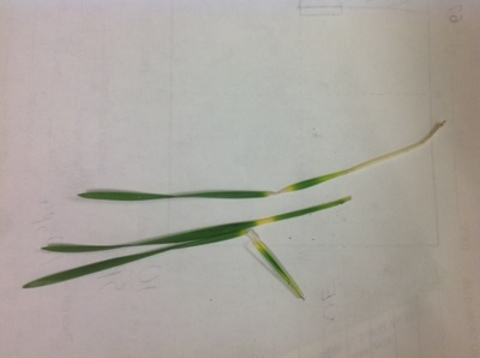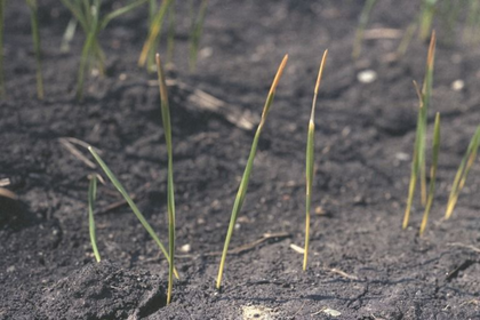In the spring, dry sunny weather with high winds helps dry off fields and make strides with planting the crop. Unfortunately, this can also stress the young, small grain seedlings.
Symptoms
The daytime heat at the soil surface can cause heat canker. This basically cooks the tender young tissue at the soil surface, which appears as a yellow, slightly constricted band (Photos 1 and 2).
As the leaf continues growing, this yellow band (1/8 to 1/4 inches) moves upward and away from the soil surface. If the hot and dry weather lasts for several days, repeated bands can become visible.
Impact
Because of the high winds, the tips of leaves may break off at the yellow band, as with freeze injury, and give a field a very ragged appearance. Damage from heat canker is temporary and shouldn’t affect further growth and development.
Reviewed in 2021



